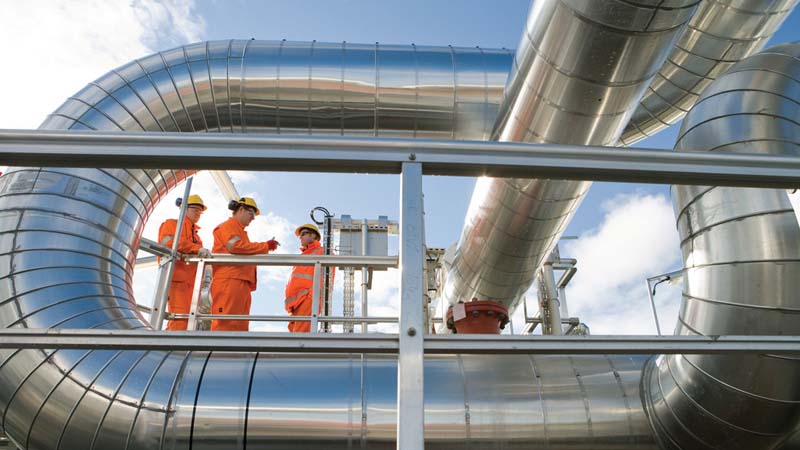To prevent dangerous climate change, natural gas will have to be phased out faster than in most official forecasts, according to a new report.
If countries are serious about the Paris Agreement aspiration of limiting the long-term world temperature rise to 1.5C, then many of the proposals to increase gas production and distribution will be unnecessary. New terminals and pipelines will never be fully used and will become stranded assets.
Conversely, if they go ahead with these investments, it risks locking in levels of fossil fuel use that will blow the climate target.
The report, Foot off the Gas, is published by Climate Action Tracker (CAT), an independent science-based assessment which tracks countries’ emission commitments and actions.
CAT’s members are Climate Analytics, Ecofys and NewClimate Institute, with the Potsdam Institute for Climate Impact Research as a collaborator.
Climate weekly: Sign up for your essential climate news update
The report says part of the problem is that governments, guided by projections from the International Energy Agency (IEA), are overestimating the need for natural gas, both to replace coal and to act as emergency back-up when supplies from intermittent renewables falter.
IEA annual reports have consistently underestimated the speed of growth of renewables and failed to grasp the increasing role of other technologies like bio-gas, battery storage and hydrogen to even out any intermittency in supplies of electricity from solar and wind, it says.
“One example is China, where in 2016 the IEA projected renewables would rise to 7.2% of the power supply by 2020 – but by the end of 2016 they had already reached 8%. Additionally, India and the Middle East are also seeing renewables rising much faster than mainstream projections,” said Niklas Höhne from NewClimate Institute.
Changes in the way grids are organised are already happening in Europe, together with the building of long-distance connectors between countries that exchange renewable energy when one has a surplus. These developments cut the need for generation from gas.
Report: Trump-era climate resistance, from a beachside in Rhode Island
The best-known example is hydro-electricity from Norway being used to boost wind energy supply in Denmark, and the reverse happening when there is a surplus of wind energy in Denmark and Germany.
Already many of the very expensive pipelines for transporting gas are under-utilised, and expensive ports and facilities to export liquid petroleum gas will never be used at full capacity, the report claims.
For example, utilisation rates of US natural gas infrastructure are at 54%, and are even lower in Europe, at 25%.
“This over-investment in natural gas infrastructure is likely to lead to either emissions overshooting the Paris Agreement’s 1.5C and 2C goals – or a large number of stranded assets as the shift to cheaper renewables takes place, “ said Andrzej Ancygier of Climate Analytics.
The report sees a dwindling role for natural gas towards the middle of the century because of increasing competition from renewables that continue to get cheaper.
This is contrary to the official line that gas consumption will continue to rise and is an important “bridging fuel” towards a carbon-free world.
“Natural gas is often perceived as a ‘clean’ source of energy that complements variable renewable technologies. However, there are persistent issues with fugitive emissions during gas extraction and transport that show that gas is not as ‘clean’ as often thought,” said Bill Hare of Climate Analytics.
“Natural gas will disappear from the power sector in a Paris Agreement-compatible world, where emissions need to be around zero by mid-century.”
Doubt is also cast on the possibility that gas can be used along with carbon capture and storage. Although the report says that some gains can be made, it is an expensive technology – and even more costly if it is going to be a reliable way of reducing emissions by nearly 100%. Currently too many greenhouse gases still escape into the atmosphere at various stages of the process.
This article was produced by Climate News Network
